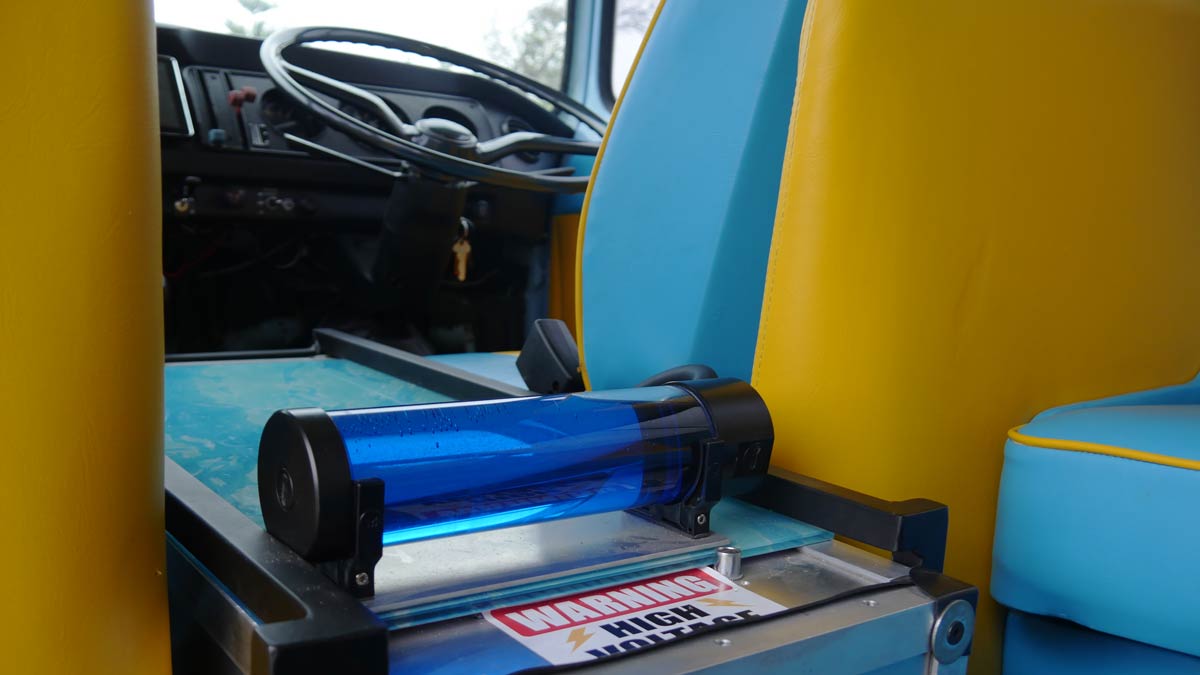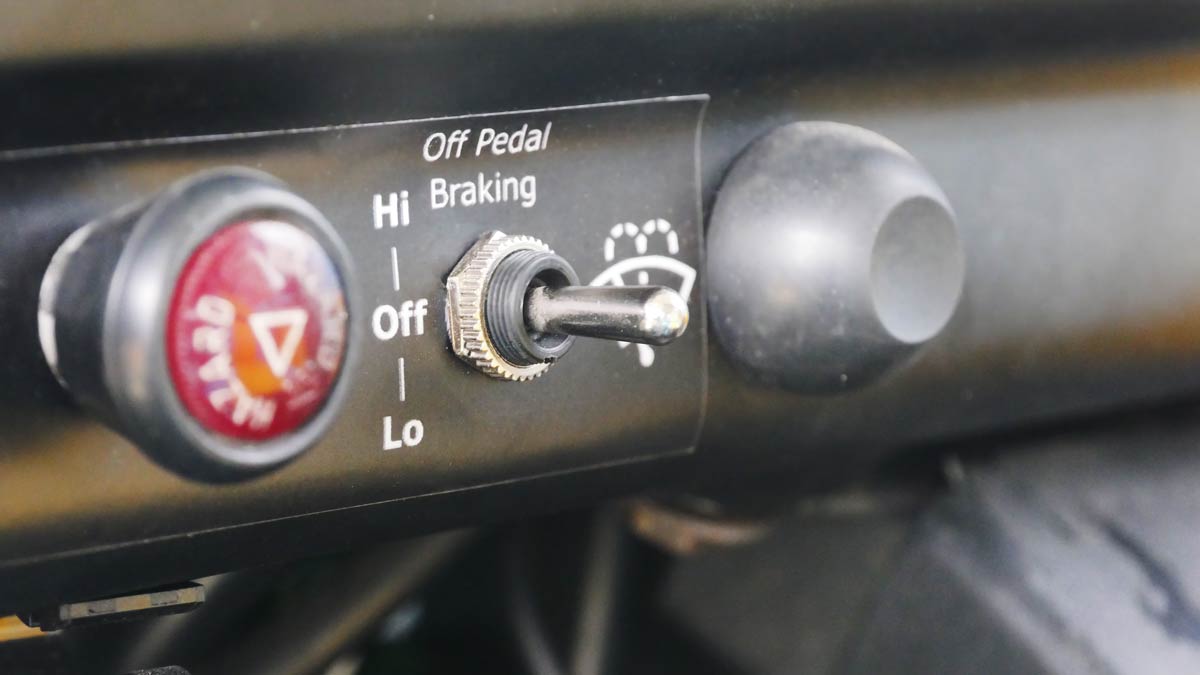Something old, something new, something borrowed, something blue. Though a matrimonial saying, it’s one that could equally be applied to this electric Kombi conversion hitting the roads in northern NSW.
A neat combination of new technology repurposed batteries and old-school looks and feels, it gives the impression that the Kombi’s fate was always to be reborn as an electric vehicle.
After running into classic car conversion start-up eV Machina’s Andy Naughton, who converted the Kombi, at an electric vehicle charger (where else?!), The Driven was offered the chance to experience the difference an electric drivetrain gives to the typically brick-like ride.
But first, Naughton explained how it came about after he was asked to upgrade the trusty community engagement vehicle to an electric drivetrain.
As the Kombi had already been revamped inside, Naughton first had to consider where to place the batteries.
Not willing to rip up the floor, he settled on splitting 53-kilowatt hours worth of Tesla cells from a written off Model S into two packs: one between the two front seats and one in the back where the engine used to be, along with the motor.

“The battery same from a Tesla Model S that was involved in a crash, but had very low kilometres, so it’s repurposing those batteries which are very good quality, very high energy, good power,” says Naughton.
While this is about the same amount of cells as a Tesla Model 3, the Kombi’s weight and shape naturally have had a big impact on driving range.
“The Kombi is fairly heavy and not very aerodynamic so those two factors create a need for a lot more power,” Naughton tells the Driven.
“So it’s got a 53-kilowatt-hour battery pack but it’s probably got about 200-250km range give or take.”
A type 2 charge port hidden behind the Kombi’s fuel cap allows the Kombi’s 4-module pack in the front and 6-module pack in the back to be recharged simultaneously at a rate of 6.6kW.

A blue cartridge sits above the front pack and, while this has a definite space-age appearance, Naughton explains this is part of the battery cooling system.
“All the battery modules and also the motor controller or inverter are cooled by water – there’s something like three pumps, three reservoirs and 20 metres of hose.”
Like any electric vehicle, it has regenerative braking to recover power when going downhill or slowing down. In this case, there are two levels, plus coasting (no regeneration), plus when using the foot brake.
In the dash, there is a satisfying combination of new tech and old switches, such as the tablet that fits perfectly where the cassette rack used to be (Naughton says he configured Torque, a free OBD-enabled app, to show the Kombi’s performance, range and other data on the tablet when driving).
Naughton has also cleverly integrated the switch for the regen (“off pedal braking”) into the dash using an old toggle switch in such a way that it doesn’t look out of place at all – a small detail but it’s this kind of thing that makes classic conversions so satisfactory.

There’s also a switch on the dash for reverse that automatically turns on a reversing camera integrated to work with the in-built tablet.
So what was it like to drive?
A simple flick of the switch puts the Kombi into reverse, and the Kombi picks up pace effortlessly. The speed-sensing module Naughton has added at the base of the steering wheel, that turns faster at slow speeds and is less sensitive at high speeds, also makes driving so much easier.
The effort of driving a Kombi up a hill is something most have seen, if not experienced first-hand: it is a slow affair that is accompanied by a great deal of patience and perseverance, and the inevitable “dakka dakka” noise of the Volkswagen engine in the back compartment.
This converted Kombi camper instead gains considerable pace when going uphill, a drive around the undulating north coast of NSW by this writer confirmed.
Frankly, there’s nothing quite like getting in a Kombi and not having to wrench it into gear before crawling up a hill with impatient traffic behind.
In fact, the three-speed vehicle had so much torque that if starting in first-gear, the occupants of the front row are jolted off the seat (for this reason, Naughton says it really only needs to be started in second).
The placement of the batteries above the floor, however, means the van still has the typical Kombi sway; and this, coupled with the extra power, means it needs a careful hand at the wheel. If a future upgrade can include placing those cells beneath the floor, a lower centre of gravity would give it a more solid feel.
Naughton says the Kombi will soon be given a new wrap to shout out its new life as an electric vehicle, and it will no doubt become a great “conversation car”.
This article has been updated with more information about charging and range.

Bridie Schmidt is associate editor for The Driven, sister site of Renew Economy. She has been writing about electric vehicles since 2018, and has a keen interest in the role that zero-emissions transport has to play in sustainability. She has participated in podcasts such as Download This Show with Marc Fennell and Shirtloads of Science with Karl Kruszelnicki and is co-organiser of the Northern Rivers Electric Vehicle Forum. Bridie also owns a Tesla Model Y and has it available for hire on evee.com.au.

